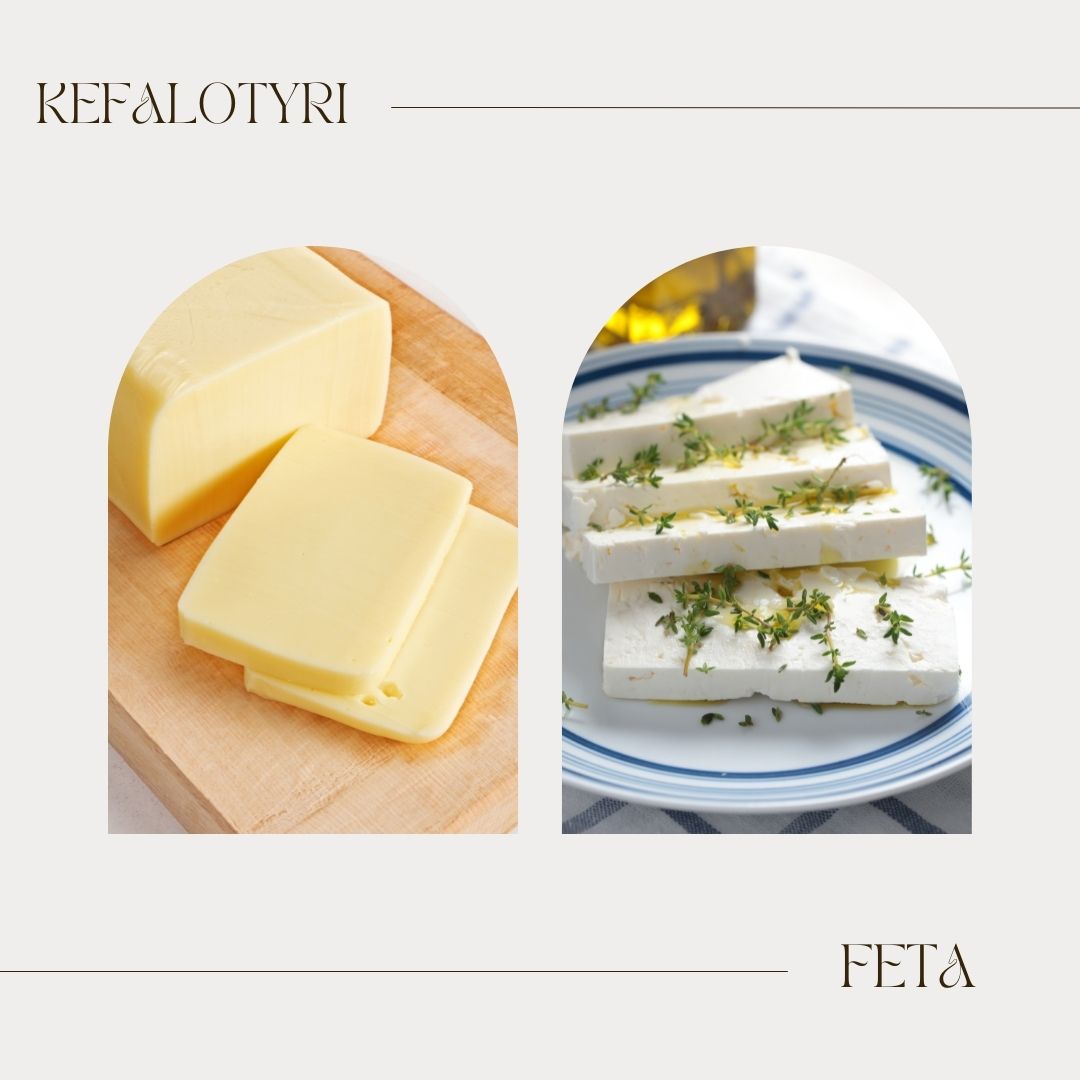Last Updated on November 5, 2022 by Aaron
Kefalotyri and feta cheese are two popular types of cheese that are often served in many dishes. Though they have some similarities, they also have unique features that set them apart. In this article, we will take a closer look at the two kinds of cheese and compare and contrast them.
They are both originated from Greece and made from sheep’s or goat’s milk.
Table of Contents
Flavor Profile and Features
When it comes to taste, both types of cheese are salty. They can be quite strong in flavor. Both cheeses have the same bold and sharp taste that is often associated with stronger-tasting Greek foods.
Feta cheese is much softer than kefalotyri and crumbles easily. It’s usually brined and moist. Feta can be used as a spread but it can also be served on its own with bread or crackers like other types of cheeses. In addition, you could use feta in salads and pasta dishes because it blends well with many foods that are commonly found in Greek cuisine.
Kefalotyri is a firm hard cheese. It’s flaky and doesn’t crumble like feta. It has a dry grainy texture with irregular “eyes” or holes. The flavor is quite strong and sharp, so it can be a great choice for those who enjoy bolder flavors. However, it can also be used in salads and pasta dishes and it goes well with olives, tomatoes, and cucumbers.
Age
Feta and Kefalotyri are both aged cheese. Feta cheese is aged for 2-8 months on average, but it may be kept for up to a year to acquire the best tastes. Kefalotyri, on the other hand, ages 3 months minimum for young Kefalotyri and 1 year above for aged Kefalotyri.
Young Kefalotyri is relatively mild. The longer the Kefalotyri ages, the more intense in flavor and sharper they become as well as thicker with a drier texture.
Feta, on the other hand, the sharp taste mellow out as it ages. It also depends on the types of feta and milk composition.
History and origin
Both kefalotyri and feta cheese are originated from Greece. Kefalotyri was first mentioned in the Byzantine period which is around 330 AD, while the earliest documented feta cheese dates back to the 8th century BC. So technically, feta is older.
The production
Both cheeses are made from sheep’s or goat’s milk, and the production of feta and kefalotyri are quite similar too. Notably, feta is brined-aged in a semi-permeable wooden barrel for months; While Kefalotyri is not matured in brined water. The process provided feta a warm and humid environment for the piquancy to develop.
Serve and use
You can serve feta as a spread or crumble it over salads, pasta dishes, and sandwiches. It’s one of the most popular Greek cheeses and you will find many menu items that are served at any traditional Greek restaurant. Its use is not limited to just cooking; You could also eat feta on its own with bread or crackers.
Kefalotyri is also served in salads and pasta dishes but it’s not often used as a spread but grated over. It can be quite strong-flavored, which is best paired with sweet wines (read my detail article here).
Nutrition
Kefalotyri and feta cheese, like most types of cheeses, are high in protein. Feta has 20% lower calories than Kefalotyri which is reasonably due to the higher water content. In addition, they also provide a good amount of calcium which is important for bone health.
Source: USDA

